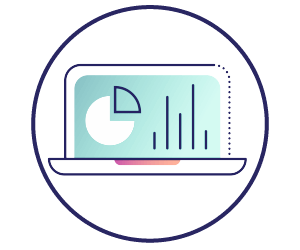In the era of Cloud 1.0, early adopters were often drawn to the cloud because it allowed them to reduce Capex and move to a more predictable subscription pricing model. In recent years, cloud adoption has surged because organizations have recognized that it not only reduces their hardware purchases and per-seat software licenses but provides many operational benefits as well.
But this swelling demand for cloud services has brought on a new wave of economic challenges that organizations have had to recognize, acknowledge, understand and act on. Specifically, the widespread use of cloud services―often by business users with little or no oversight by the IT organizations―has resulted in poor visibility into the enterprise’s computing environment. This, in turn, has often been a catalyst for overspending on cloud services, resulting in unanticipated excess usage, inefficiency and waste, and a degraded ability to properly budget and monitor spend.
Without a heightened awareness of the potential for financial challenges in the cloud, IT and business leaders will continue to struggle to maximize their return on investment on their journey to the cloud, as well as lose their much-desired spending predictability.
Enterprises need new tools that deliver:
- Cloud cost management, including usage reporting, performance management and container reporting.
- Improved cost visibility and predictability, including the ability to track spending over time and make meaningful comparisons. Enterprises must be able to manage the use and application of Reserved Instances and budget more accurately based on hyperaccurate, evolving usage patterns and service-level agreements, as well as manage the appropriate chargebacks to business units.
In cloud cost management, the continued expansion of cloud computing services―especially for services purchased by business units outside the control of a centralized IT operations staff―has often resulted in higher, rather than lower, computing costs due to inefficiency and waste brought on by poor visibility and inaccurate tracking. Imagine what your organization could do, however, if it had the ability to identify and track cloud services spending over a year, based on actual, historical data with customized, real-time reporting. Automated policies tied to tracking, surfacing and identifying service usage increases your organization’s ability to pinpoint potential cost savings and take fast action. And intelligent automated systems can make recommendations on whether and when to right size or even terminate resources.
Reserved Instances also are an important part of cloud management economics, and having a cloud management platform that analyzes and identifies ways to reduce costs based on Reserved Instance usage is essential. In cloud economics, proactivity often is the name of the game, helping decision-makers receive recommendations on the best ways to maximize existing investments in Reserved Instances based on historical usage, reservation types and expiration dates.
The Ultimate Guide to Amazon EC2 Reserved Instances
Read this paper to learn how CloudHealth can help you feel confident about pursuing Amazon EC2 Reserved Instances.
Download NowSpend tracking and budget reporting also can be greatly facilitated―and automated―with the right cloud management platform. By tracking spend at granular levels―services, applications, users, departments and geographies―and comparing available budgets to actual spend as it occurs, organizations can make smarter, faster and more accurate decisions on cloud computing resources and services.
The CloudHealth cloud management platform is optimized for cloud economics, helping enterprises save an average of 25% on monthly cloud expenditures, and ensures cloud resources are continuously optimized based on actual, real-time information.
Whether you’re using a public cloud, private cloud or a hybrid cloud in an on-premises environment, CloudHealth helps your organization track costs at well-defined levels to simplify budget tracking, monitor spending patterns and identify ways to cut costs and improve ROI. A “single pane of glass” management console provides increased transparency into cloud usage and the overall impact on costs, performance and scalability. Cloud-usage reports can be customized according to a variety of factors, including user-set time frames, in order to track inventory and analyze configurations to project future usage.
CloudHealth also optimizes the use of Reserved Instances throughout their entire lifecycle, from purchase to full utilization, through an intelligent, highly automated set of tools and processes. And if you’re migrating workloads from on premises to the cloud, CloudHealth’s platform creates an in-depth view to determine which workloads are the best candidates for migration and to which environments.
For more information on how CloudHealth helps provide greater visibility and insight into the economics of your cloud environment, please visit www.cloudhealthtech.com.
Trevor Jones
Site Editor

